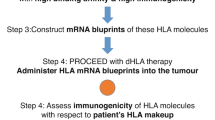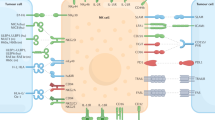Abstract
CYTOTOXICITY tests in vitro detect some components of the graft rejection reaction. In one such test, antigenically modified (hapten trinitrophenyl TNP) mouse lymphocytes are detected by the action of cytolytic T lymphocytes (CTL) if the sensitisation of the effector cells is carried out in vitro1. In the CTL test there is evidence2 that the reaction is not against the hapten, but against antigenic membrane groups coded by H–2D and H–2K genes, a phenomenon termed ‘H–2 restriction’. In contrast, immunisation in vivo with TNP-modified lymphocytes results in a low production of CTL as detected in vitro, due probably to production of T suppressor cells3. The aim of the present work was to compare the in vivo efficacy of the response of the TNP splenocytes with that obtained in vitro, and to determine whether the H–2 restriction applies. Our results show that the immunogenetic implications differed according to whether the test was carried out in vivo or in vitro, and suggest that the effectors for target cell destruction are also different.
This is a preview of subscription content, access via your institution
Access options
Subscribe to this journal
Receive 51 print issues and online access
$199.00 per year
only $3.90 per issue
Buy this article
- Purchase on Springer Link
- Instant access to full article PDF
Prices may be subject to local taxes which are calculated during checkout
Similar content being viewed by others
References
Shearer, G. M. Eur. J. Immun. 4, 527–533 (1974).
Shearer, G. M. Transplant. Proc. 9, 853–857 (1977).
Röllinghof, M., Starzinski-Powitz, I., Pfizenmayer, K. & Wagner, H. J. exp. Med. 145, 455–459 (1977).
Bainbridge, D. R. & Gowland, G. Ann. N. Y. Acad. Sci. 129, 257–273 (1966).
Burstein, N. A. Rev. Eur. Etudes clin. Bio. 15, 873–875 (1970).
Brand, K. G., Buoen, L. C. & Brand, I. J. natn. Cancer Inst. 49, 459–465 (1972).
Gordon, R. D., Simpson, E. & Samuelson, L. E. J. exp. Med. 142, 1108–1120 (1975).
Bevan, M. J. Immunogenetics 3, 177–184 (1976).
Wettstein, P. J., Haughton, G. & Frelinger, J. A. J. exp. Med. 146, 1346–1355 (1977).
Matzinger, P. & Bevan, M. J. Cell. Immun. 33, 92–100 (1977).
Wachtel, S. S., Gasser, D. L. & Silvers, W. K. Science 181, 862–863 (1973).
Katz, D. H. Lymphocyte Differentiation, Recognition and Regulation (Academic, New York, 1970).
Burakoff, S. J., Germain, R. N. & Benacerraf, B. J. exp. Med. 144, 1609–1620 (1976).
Dennert, G. & Hyman, R. Eur. J. Immun. 7, 251–257 (1977).
Dennert, G. Nature 255, 712–713 (1975).
Author information
Authors and Affiliations
Rights and permissions
About this article
Cite this article
BISCHOFF, P., OTH, D. In vivo immunisation and reaction against TNP-modified splenocytes. Nature 274, 806–808 (1978). https://doi.org/10.1038/274806a0
Received:
Accepted:
Issue Date:
DOI: https://doi.org/10.1038/274806a0
Comments
By submitting a comment you agree to abide by our Terms and Community Guidelines. If you find something abusive or that does not comply with our terms or guidelines please flag it as inappropriate.



